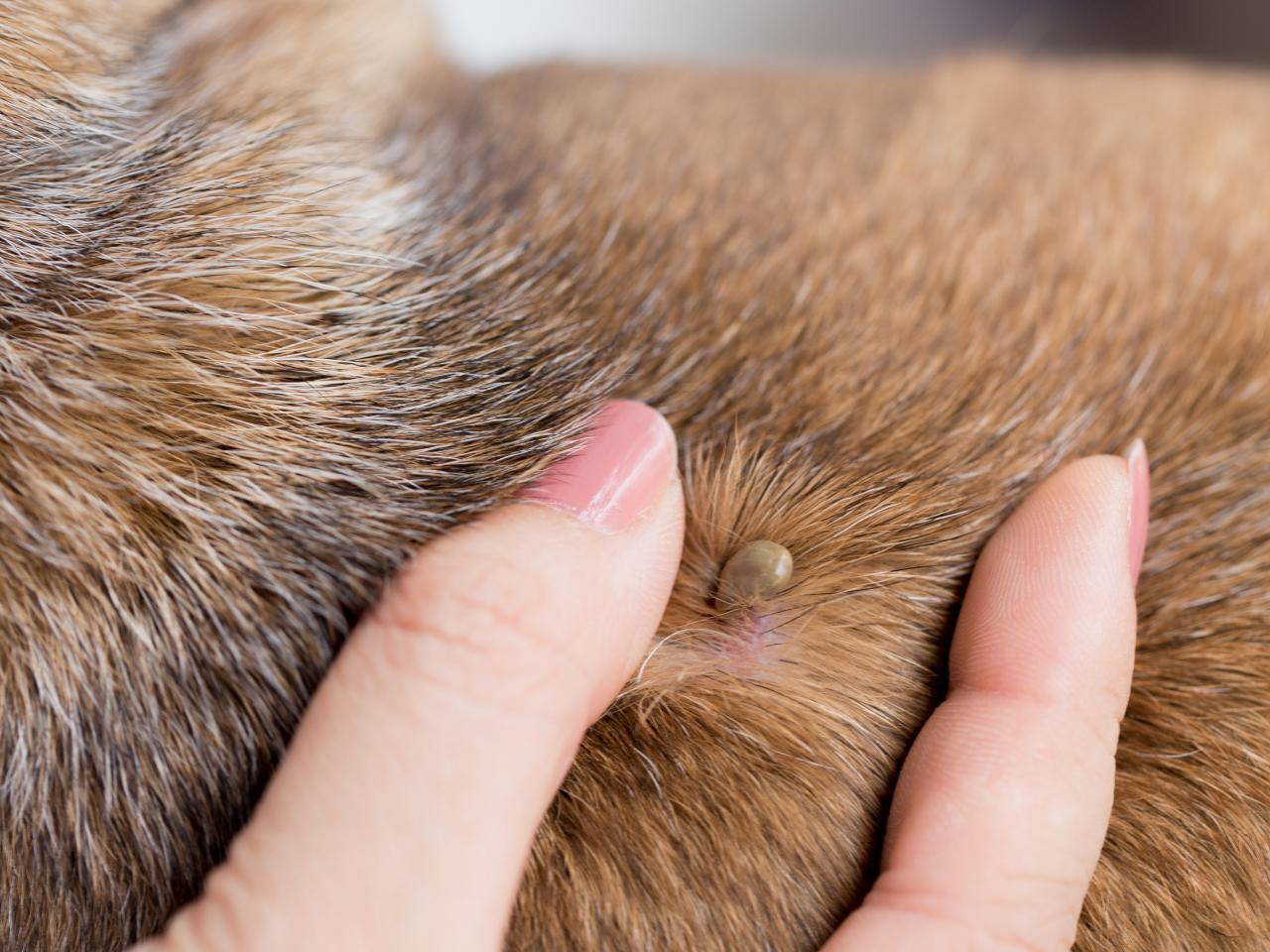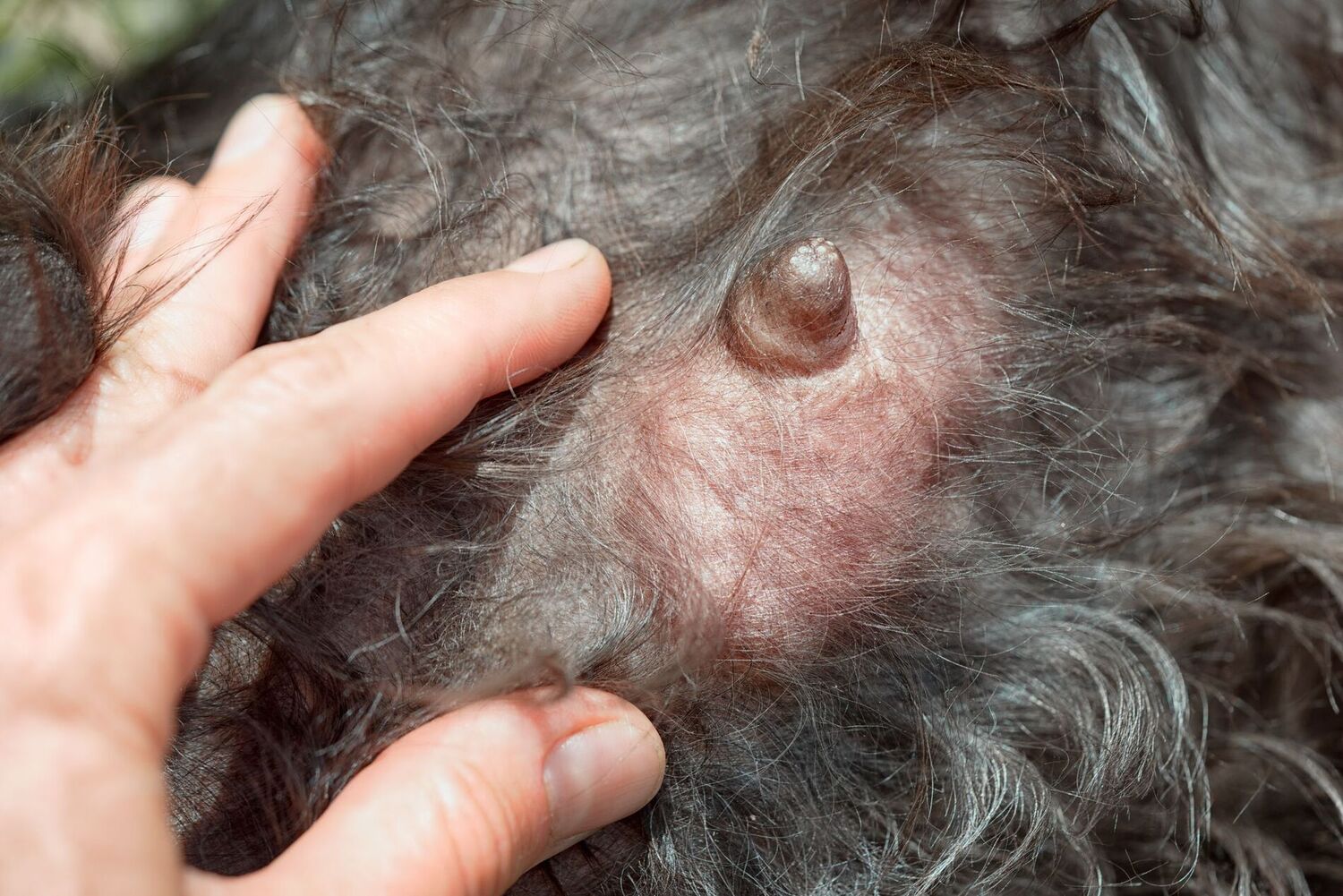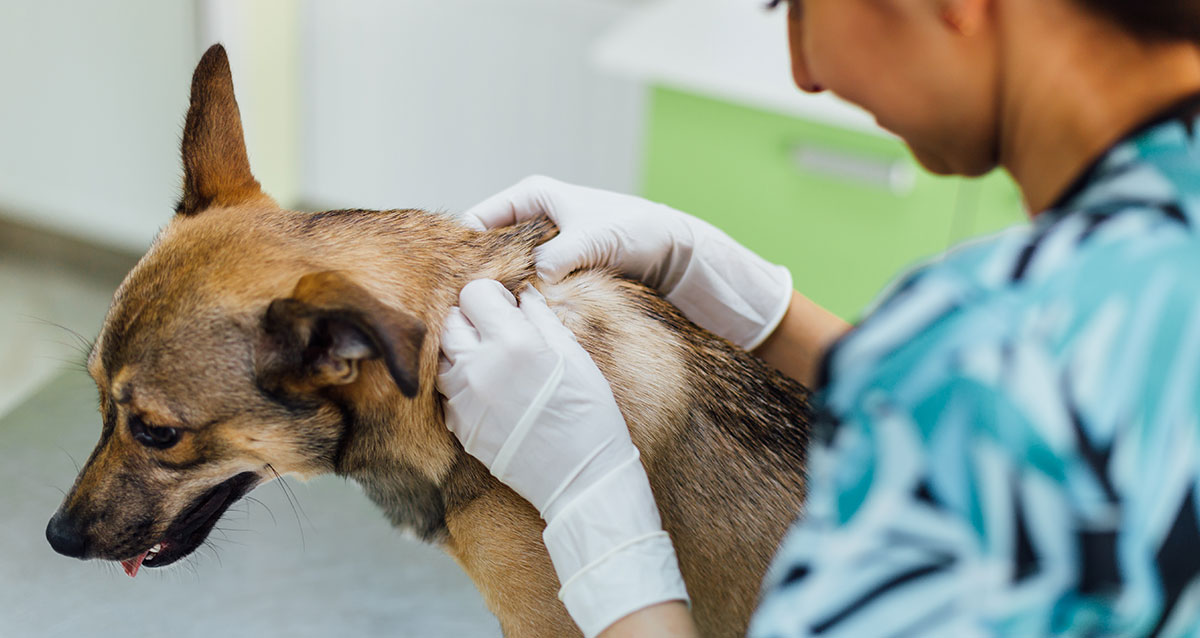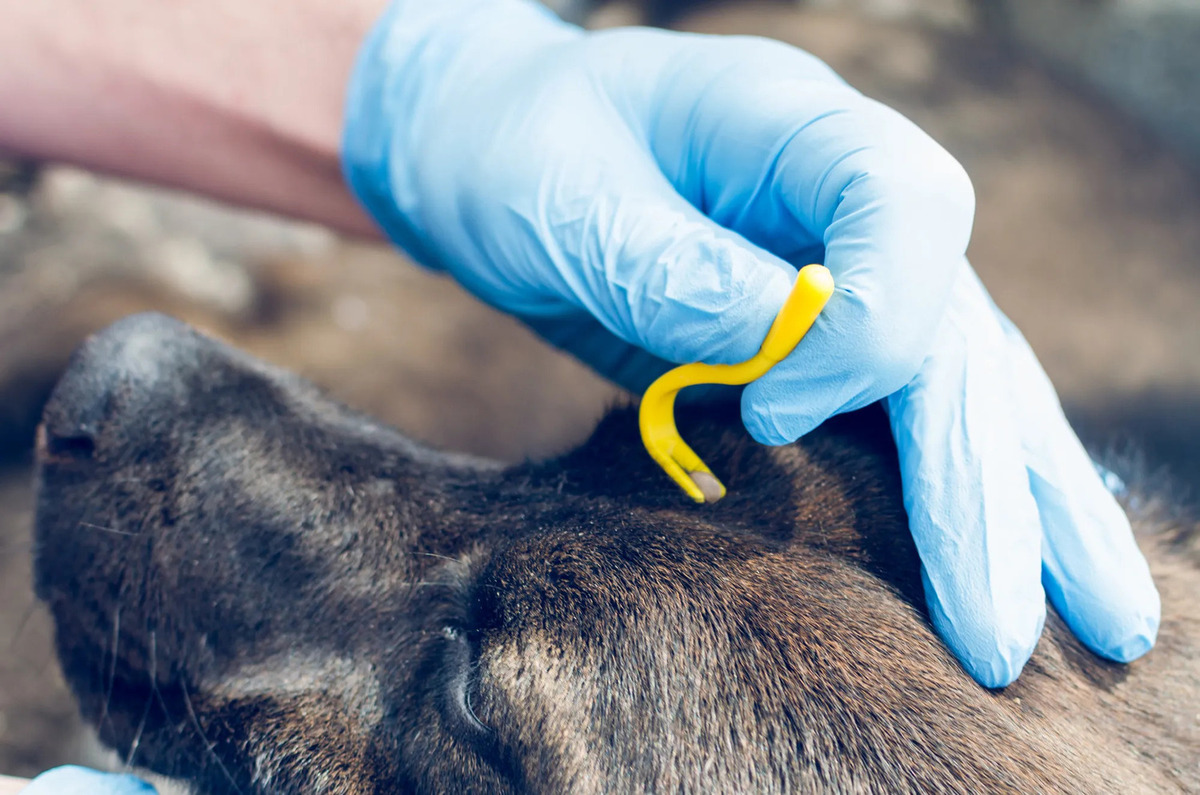Home>Health & Wellness>Common Health Issues>How Can You Tell A Tick From A Mole On A Dog


Common Health Issues
How Can You Tell A Tick From A Mole On A Dog
Published: February 3, 2024
Learn how to differentiate between ticks and moles on your dog and understand common health issues affecting pets. Get expert advice on managing your pet's well-being.
(Many of the links in this article redirect to a specific reviewed product. Your purchase of these products through affiliate links helps to generate commission for Pawsomeoldies.com, at no extra cost. Learn more)
Table of Contents
Introduction
When it comes to our furry friends, keeping an eye out for any unusual skin irregularities is crucial for their overall well-being. Among the various skin concerns that can affect dogs, distinguishing between ticks and moles is essential for proper treatment and care. Ticks are notorious for transmitting diseases, while moles are typically harmless skin growths. Understanding the physical characteristics and behaviors of ticks and moles is vital for pet owners to effectively identify and address any issues that may arise.
In this comprehensive guide, we will delve into the distinct physical attributes and behaviors of ticks and moles, equipping you with the knowledge needed to differentiate between the two. By the end of this article, you will be well-prepared to identify and address any concerns related to ticks and moles on your beloved canine companion.
Read more: How Do You Get Rid Of Seed Ticks From Dogs
Physical Characteristics of Ticks
Ticks are small arachnids belonging to the order Parasitiformes, known for their blood-feeding behavior. These ectoparasites have distinct physical characteristics that set them apart from other common skin irregularities. Understanding these features is essential for accurately identifying ticks on your dog's skin.
-
Size and Color: Ticks vary in size depending on their life stage and species. They can range from as small as a poppy seed to as large as a pencil eraser when engorged with blood. The color of ticks also varies, with some appearing reddish-brown, while others may have a darker hue.
-
Body Structure: Ticks have a unique body structure characterized by a tough, shield-like plate called a scutum located behind the mouthparts. This distinguishing feature sets ticks apart from other common skin anomalies such as moles.
-
Legs: Ticks possess eight legs, making them arachnids. These legs are well-adapted for grasping onto the host's skin, allowing the tick to remain firmly attached while feeding.
-
Mouthparts: The mouthparts of ticks are specialized for feeding on blood. They consist of a barbed feeding tube that is inserted into the host's skin, enabling the tick to extract blood for nourishment.
-
Engorgement: As ticks feed, they become engorged with blood, causing their bodies to swell significantly. This engorged state is a crucial indicator of a tick infestation and distinguishes them from other skin irregularities.
Understanding these physical characteristics of ticks is vital for promptly identifying and addressing any potential tick infestations on your dog. By being able to differentiate ticks from other skin anomalies, you can take the necessary steps to ensure your pet's well-being and prevent any potential health risks associated with tick-borne diseases.
Physical Characteristics of Moles
Moles, also known as melanocytic nevi, are common skin growths that can develop on dogs. These benign formations are typically harmless and are often characterized by their distinct physical attributes. Understanding the key characteristics of moles is essential for differentiating them from other skin irregularities and ensuring proper care for your canine companion.
-
Appearance: Moles on dogs can vary in appearance, ranging from small, flat spots to slightly raised, pigmented growths on the skin. They are often dark in color, with shades of brown, black, or even reddish hues. The texture of moles may differ from the surrounding skin, and they can present as solitary growths or in clusters.
-
Size and Shape: Moles come in various sizes and shapes, with some being as small as a pea and others growing larger over time. Their shapes can be irregular or round, and they may have well-defined borders or appear more diffuse.
-
Texture: The texture of moles on a dog's skin can range from smooth to slightly rough or bumpy. While some moles may have a uniform texture, others might exhibit variations in surface smoothness.
-
Location: Moles can appear anywhere on a dog's body, including the head, neck, back, abdomen, and limbs. They may also develop in areas with hair or on exposed skin, making it essential to carefully inspect your dog's entire body for any new or changing moles.
-
Development and Changes: It's important to monitor the development and any changes in moles on your dog. While most moles remain stable over time, any alterations in size, color, or texture should be promptly evaluated by a veterinarian to rule out any potential concerns.
Understanding these physical characteristics of moles is crucial for pet owners to distinguish them from other skin irregularities, such as ticks or other growths. By being able to identify and differentiate moles on your dog, you can ensure that any necessary veterinary attention is sought if changes or concerns arise. Regular skin checks and awareness of your dog's normal skin features are key in maintaining their overall health and well-being.
Behavior of Ticks
Ticks are resilient ectoparasites that exhibit distinct behaviors, making them adept at latching onto hosts and feeding on blood. Understanding the behavior of ticks is crucial for pet owners to effectively prevent and address potential infestations on their dogs.
Host Seeking and Attachment
Ticks are opportunistic parasites that actively seek out hosts for blood meals. They are capable of detecting hosts through sensory cues such as body heat, carbon dioxide, and movement. When a suitable host is identified, ticks use their specialized legs to grasp onto the host's skin. Their attachment is facilitated by barbed mouthparts that firmly anchor them in place, allowing for prolonged feeding.
Feeding and Engorgement
Once attached, ticks begin feeding by inserting their mouthparts into the host's skin to access blood. They secrete substances that prevent the host's blood from clotting, enabling a continuous flow of blood into their bodies. As ticks feed, they become engorged, swelling in size as they consume blood. This engorgement is a crucial aspect of tick behavior, serving as a visible indicator of their presence on a host.
Questing Behavior
Ticks exhibit a behavior known as questing, where they actively position themselves in vegetation, such as grass, shrubs, or leaf litter, in anticipation of a passing host. They extend their legs and wait for potential hosts to brush against them, allowing for quick attachment. This behavior increases the likelihood of encountering and latching onto suitable hosts, contributing to their survival and reproductive success.
Survival Strategies
Ticks are resilient parasites capable of withstanding various environmental conditions. They can endure periods of starvation and survive in diverse habitats, including wooded areas, grasslands, and urban environments. Additionally, ticks have evolved mechanisms to resist desiccation and tolerate temperature fluctuations, enabling them to persist in different climates and geographic regions.
Disease Transmission
One of the most concerning aspects of tick behavior is their ability to transmit diseases to their hosts. Ticks can harbor and transmit a range of pathogens, including bacteria, viruses, and parasites, posing significant health risks to both animals and humans. Diseases such as Lyme disease, ehrlichiosis, and Rocky Mountain spotted fever are among the many illnesses that can be transmitted through tick bites.
Understanding the behavior of ticks is essential for implementing effective preventive measures and promptly addressing any potential infestations. By being aware of their host-seeking strategies, feeding behaviors, and survival tactics, pet owners can take proactive steps to protect their dogs from tick-borne diseases and minimize the risks associated with tick infestations. Regular inspection and prompt removal of ticks, along with appropriate preventive measures, are crucial in safeguarding the well-being of canine companions.
Read more: How To Remove Tick Eggs From A Dog
Behavior of Moles
Moles, also known as melanocytic nevi, are common benign skin growths that can develop on dogs. While moles are primarily recognized for their distinct physical characteristics, understanding their behavior is equally important for pet owners. Unlike ticks, moles do not exhibit active behaviors such as seeking hosts or feeding on blood. Instead, the behavior of moles is primarily characterized by their static nature and gradual development.
Static Presence
Moles on a dog's skin remain stationary and do not display any mobility or active behaviors. Once formed, moles typically maintain a fixed position on the skin, with no inherent ability to move or relocate. This static presence distinguishes moles from parasites such as ticks, which actively seek hosts and engage in feeding behaviors.
Gradual Development
The behavior of moles also encompasses their gradual development over time. These benign skin growths often emerge slowly, with some moles appearing during a dog's early stages of life and others developing later in adulthood. While moles may undergo subtle changes in size, color, or texture over an extended period, their overall behavior is characterized by a gradual and non-invasive progression.
Stability and Inactivity
Once formed, moles typically exhibit stability and inactivity, remaining unchanged for extended periods in the absence of external influences. Unlike parasites or active skin conditions, moles do not engage in feeding, movement, or any form of interaction with the surrounding environment. Their behavior is defined by a lack of activity, making them distinguishable from dynamic skin irregularities.
Response to External Factors
While moles do not display active behaviors, their development and characteristics may be influenced by external factors such as sun exposure, hormonal changes, or genetic predispositions. These factors can impact the appearance and evolution of moles over time, contributing to variations in their size, color, or texture. Understanding the potential influence of external factors is essential for monitoring and assessing the behavior of moles on a dog's skin.
By recognizing the behavior of moles as static, gradual, and influenced by external factors, pet owners can effectively differentiate them from active skin irregularities such as ticks. Monitoring the stability and changes in moles, along with seeking veterinary evaluation for any concerning developments, is crucial in ensuring the overall skin health and well-being of canine companions.
How to Differentiate Between Ticks and Moles on a Dog
Distinguishing between ticks and moles on a dog is essential for pet owners to effectively address skin irregularities and ensure the well-being of their canine companions. While both ticks and moles can appear as small dark spots on the skin, understanding their distinct characteristics and behaviors is crucial for accurate identification.
Visual Inspection
Visual inspection is a primary method for discerning between ticks and moles on a dog. Ticks, when attached and engorged, appear as raised, rounded bumps on the skin, varying in size and color. Their characteristic eight legs and shield-like scutum behind the mouthparts are key visual indicators. In contrast, moles present as pigmented skin growths with defined borders, ranging in size and texture. They may appear as flat spots or slightly raised formations, often exhibiting uniform coloration.
Texture and Attachment
The texture and attachment behavior of ticks and moles differ significantly. Ticks, being parasitic arachnids, firmly attach themselves to the host's skin using their barbed mouthparts and legs. Their engorged state and the presence of legs are tactile cues that distinguish them from moles. Moles, on the other hand, are non-parasitic skin growths that do not exhibit attachment or feeding behaviors. Their texture may vary from smooth to slightly rough, but they do not latch onto the skin or engorge with blood.
Read more: How To Tell If There’s A Tick On Your Dog
Behavior and Mobility
Observing the behavior and mobility of the skin irregularity can aid in differentiation. Ticks exhibit active behaviors such as questing, host-seeking, and feeding, while moles remain static and do not display any mobility. Ticks may be found in areas where the dog has been active, such as grassy or wooded environments, while moles remain fixed on the skin without any inherent movement.
Veterinary Evaluation
Seeking veterinary evaluation is crucial for accurately identifying and addressing skin irregularities on a dog. Veterinarians can conduct thorough examinations, including microscopic analysis, to differentiate between ticks and moles. Additionally, they can provide guidance on preventive measures for tick infestations and determine the appropriate course of action for benign moles.
By being attentive to visual cues, texture, behavior, and seeking professional assessment, pet owners can confidently differentiate between ticks and moles on their dogs. This proactive approach enables timely intervention for tick removal and appropriate care for benign skin growths, contributing to the overall health and well-being of canine companions.
Conclusion
In conclusion, being able to differentiate between ticks and moles on a dog is paramount for pet owners in ensuring the overall health and well-being of their beloved canine companions. By understanding the distinct physical characteristics and behaviors of ticks and moles, individuals can effectively identify and address any skin irregularities that may arise.
Ticks, with their small size, varied coloration, eight legs, and engorgement when feeding, present as parasitic arachnids that actively seek hosts for blood meals. Their behavior includes questing, attachment, and the potential transmission of diseases, highlighting the importance of prompt identification and removal to mitigate health risks.
On the other hand, moles, characterized by their pigmented skin growths with diverse sizes, shapes, and textures, exhibit static behavior and gradual development. Unlike ticks, moles do not engage in active behaviors such as feeding or mobility, making them distinguishable benign skin formations.
Through visual inspection, tactile cues, and an understanding of the behaviors exhibited by ticks and moles, pet owners can confidently differentiate between the two. Regular skin checks and vigilance in identifying any changes or concerns play a crucial role in maintaining the skin health of dogs.
Seeking veterinary evaluation for professional assessment and guidance is essential, providing pet owners with the necessary support in addressing skin irregularities and implementing preventive measures against tick infestations.
By equipping themselves with the knowledge and awareness of ticks and moles, pet owners can take proactive steps to protect their dogs from potential health risks associated with tick-borne diseases and ensure appropriate care for benign skin growths.
In essence, the ability to discern between ticks and moles empowers pet owners to be vigilant advocates for their canine companions' skin health, fostering a nurturing and supportive environment for their overall well-being.











